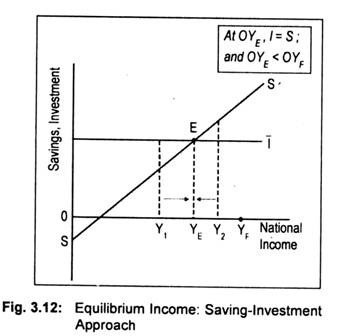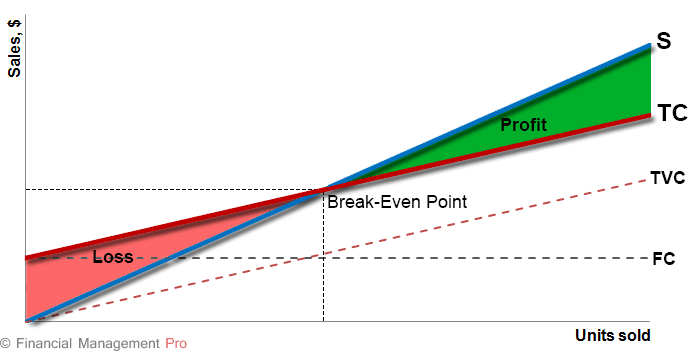Forex Trading
Bull Market Definition

Early on, cyclical sectors like financial stocks and industrial stocks tend to outperform as they are most sensitive to interest rates and economic growth. Let’s take a closer look at some typical hallmarks or signs of bull markets vs bear markets, and what investing strategies tend to be better suited for each one. No one can predict when markets will rise or fall, but it’s good to be aware of the differences between bull markets vs bear markets. The Internet era in the 90s started the second-longest bull market to date. An era of prosperity that was driven by investors seeing potential in investing in tech companies. The S&P surged by over 400%, driven by economic growth and stable inflation.
Why the Stock Market’s Summer Doldrums Are Not a Problem – The New York Times
Why the Stock Market’s Summer Doldrums Are Not a Problem.
Posted: Fri, 25 Aug 2023 07:00:00 GMT [source]
Bull markets are characterized by optimism, investor confidence, and expectations that strong results should continue for an extended period of time. It is difficult to predict consistently when the trends in the market might change. Part of the difficulty is that psychological effects and speculation may sometimes play a large role in the markets.
Bullish vs. bearish investors: What’s the difference?
In a bull market, every downturn looks like a buying opportunity, as the saying goes. The term bear reportedly became popular in the early 18th century when referring to stocks after a trade company’s stocks collapsed after being sold by speculators who didn’t own them. The upswing or increase indicates a bull market; a bull swipes “up” with its horns to attack. The good news is that the past data indicates the market has collectively had more good years than bad years. The length of the average bear market, when an index like the S&P 500 loses 20% or more of its value, is just under a year.
- During a bull market, there are several characteristics that can be observed.
- Investors tend to lose value in their portfolio and this also translates to a lack of confidence in the market.
- It can be tempting to go all-in on a hot stock or sector when the market has been growing, but the end may be closer than you think.
- Investors can also take a bullish or bearish stance, depending upon their outlook.
- It’s impossible to know exactly when a bull market will start, but one way for investors to prepare for the next one is to keep buying high-quality stocks, even when they are falling.
- The terms “bear” and “bull” are thought to derive from the way in which each animal behaves.
They often vary from bear market strategies due to more favorable market conditions. Having a higher stock allocation in a bull market is optimal as there can be more returns, whereas in a bear market investors remain more cautious. Three major stock market indexes are Dow Jones Industrial Average, the S&P 500, and the NASDAQ. Usually, all three would show signs of rising stock market indexes simultaneously, driven by economic health and investor sentiment.
How to Buy Cue Biopharma Stock Invest in CUE
Since the 18th century, investors have used the term “bull market” to describe stock prices going up. They celebrate this symbol so much that there’s an actual bull statue near Wall Street in New York City. When the market is hot, investors can easily be lulled into overconfidence and speculation. Those who chase gains may take on too much risk and, as a result, see big losses when the market dynamics change for the worse.
You’d simply liquidate some of your stocks and use the proceeds to buy bonds. “Defensive stocks will lose ground in a bear market, but tend to lose less than average, supported by steady demand for their products and, often, generous dividends,” write Smith and Burrows. It’s not uncommon for analysts and observers to call a “bull market” when prices rise 20% or more from a previous low. However, there are many definitions of a bull market, with some saying one cannot be confirmed until the previous high has been taken out. But by the time that point is reached, it may not last too much longer. The value of gold decreased as the gold bear market continued for the most part from 1987 to 2001, after which gold experienced some spectacular bull runs.
The term “bull” is also believed to describe how confident investors “charge” the market, much like how provoked bulls tend to charge at full speed toward their opponents. For more help navigating a bull market, consider speaking with an investment professional. Bull markets stand in contrast to bear markets, which represent a decrease of at least 20% from recent market highs. If you are bullish on the S&P 500, you attempt to profit from a rise in the index by going long. Bears, however, are pessimistic and believe that a particular security, commodity, or entity is set to suffer a decline in price. Bulls are optimistic investors who are attempting to profit from the upward movement of stocks, with certain strategies suited to that theory.
Mispriced stocks are hiding in plain sight and present great investment opportunities for the remainder of 2023. Forbes’ top investment experts share 7 overlooked stocks in this exclusive report, 7 Best Stocks To Buy For The Second Half of 2023. While the NBER recognizes recessions an average of eight months into the recession, the S&P 500 anticipated these recessions by an average of seven months, Stovall says. The shortest recession lasted three months and the longest 22 months.
Bull Market vs. Bear Market
During a bull market, investors are more confident (bullish) to invest internationally. They get encouraged in a bullish market to expand the existing portfolio. As a comparison, in a recession, money usage by banks is curbed, and interest rates of loans go up, limiting investments and leading to a bear market. But businesses may be overvalued on paper after the IPOs, leading to market corrections or even a bear market. For example, the overvaluation of tech stocks during the Internet boom caused a dot-com bubble between 1998 and 2000. What is more, during positive economic growth, more private companies likely issue an initial public offering, and an increase in IPO activity would then further grow a bull market.
For the patient, long-term investor, this can be a buying opportunity. So you can use a bull market to increase your value stock holdings efficiently—as preparation for the next bear market. In the meantime, you’ll collect dividends while you wait for these stocks to shine. Markets experience extended cycles where prices are generally rising or falling. Savvy investors pay close attention to bull versus bear market cycles to avoid buying stocks when they’re overpriced or selling when they’re undervalued.
Dwindling market confidence, declining corporate profitability, and recessions are all common occurrences during Bear markets. During the last crypto bull run in 2020, prices of Bitcoin reached $20,000 before plummeting. BTC price hit an all-time high in October 2021, when Bitcoin crossed the $66,000 mark, with Ethereum above $4,700.
Best Online Brokers for Stock Trading
If you do increase your stock exposure, add equities from multiple industries. Industry diversification protects you from sector-specific weakness and gives you access to sector-specific strength. We’re transparent about how we are able to bring quality content, competitive rates, and useful tools to you by explaining how we make money. Our experts have been helping you master your money for over four decades. We continually strive to provide consumers with the expert advice and tools needed to succeed throughout life’s financial journey.
During this time, the S&P 500 increased by a significant margin after a previous decline; as the 2008 financial crisis took effect, major declines occurred again after the bull market run. Since companies tend to be more profitable during bull markets, it could be a good time to ask for a raise or a promotion. It might also be an opportune time to research other job opportunities when the economy is strong versus during a bear market and down economy, when companies are more likely to cut jobs.

Growth stocks and sectors appreciate faster than peers and the overall market. Many, but not all, growth stocks are young, innovative companies that are using technology to create efficiencies or solve global issues (such as nonrenewable energy dependence). https://1investing.in/ That way, when markets rebound, as they always do, the investor does not have to “time the market” or find an optimal point in which to jump in. So, in that sense, markets can charge higher, wildly, and with great power, just like a bull.
Darius Gagne, the chief investment officer of Quantum Financial Advisors, a registered investment advisor in the Los Angeles area, says bonds can serve a similar purpose. Bonds provide a place to park money outside of the stock market so that it’s ready for spending or reinvestment in the event of a downturn. Barajas says value stocks can be another good place to look during early-stage bull markets. However, the start or end of a bull market isn’t always so clear cut to those actually watching the market. A short-lived upswing — or downturn — may not tell you everything about investors’ attitudes. NerdWallet, Inc. is an independent publisher and comparison service, not an investment advisor.
Articles Related to bull market
Our editorial team does not receive direct compensation from our advertisers. “Cash is usually the best hedge against a future downturn in the market, since it gives you money to buy when you see the market reverse,” Fernandez said. Our partners cannot pay us to guarantee favorable reviews of their products or services. Trying to time the market can actually negatively affect you—it’s difficult for even the experts to do. “You absolutely do not buy breakouts during a bear market,” O’Neil wrote.
It’s impossible to know exactly when a bull market will start, but one way for investors to prepare for the next one is to keep buying high-quality stocks, even when they are falling. However, understanding the general direction the market is going and general economic influences, one can have an idea of when and how to invest. And these moods, bullish and bearish behaviors, reflect the investors’ sentiment towards their own buying and selling behavior.
Our evaluations and opinions are not influenced by our advertising relationships, but we may earn a commission from our partners’ links. This content is created independently from TIME’s editorial staff. Pick a more recent low — in March of 2023, for instance — and the recent price growth looks less impressive. Many or all of the products featured here are from our partners who compensate us. This influences which products we write about and where and how the product appears on a page.
Follow the four strategies below to capitalize on rising stock prices. When investors see economic conditions improving, they expect those improvements to usher in higher business profits. That promotes more trading and rising stock values, as investors position themselves to gain from stronger earnings going forward. When looking at the differences triangle candle pattern between bear markets vs bull markets, the former is often seen by observers as a decline of 20% from a previous high. It’s not uncommon for this to happen during or right before recessions or periods of high unemployment. As for which investing strategies to employ, different sectors tend to outperform over various periods in a bull market.
In this scenario, the country’s economy is typically strong and employment levels are high. Additionally, one of the best non-numerical indicators for a bull market is rising investor confidence. During these times, there is a strong overall demand for stocks, and the general “tone” of market commentary tends to be positive.

People can be bullish or bearish on any investment opportunity, including real estate and commodities, such as soybeans, crude oil, or even peanuts. Having a long-term timeline insulates you from a reversal in market dynamics. If a crash follows, you will appreciate having the option to wait out another bear market. Give yourself that luxury by holding enough cash so you won’t need to tap your investment account for emergencies or major purchases.
Macroeconomic conditions and a muted mood are keeping investors tentative. By spreading investments across different asset classes, sectors, styles, and geographic regions, investors can still remain bullish without putting too many eggs in one basket. Opportunities to assume the position of a bull investor exist even when an overall market or sector is in a bearish trend. Bull investors look for growth opportunities within the down market and may look to capitalize should market conditions reverse. A bull is an investor who thinks the market, a specific security, or an industry is poised to rise. Investors who adopt a bull approach purchase securities under the assumption that they can sell them later at a higher price.
